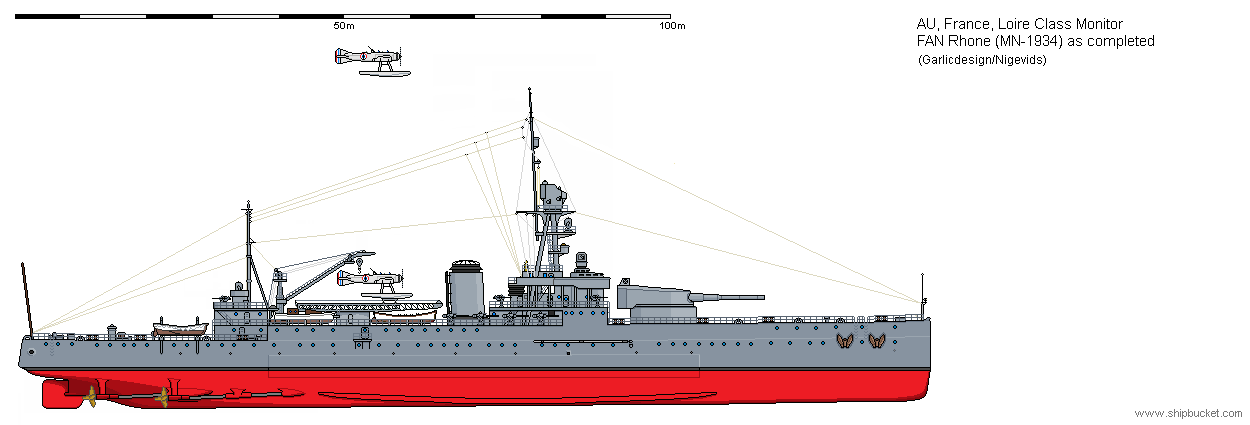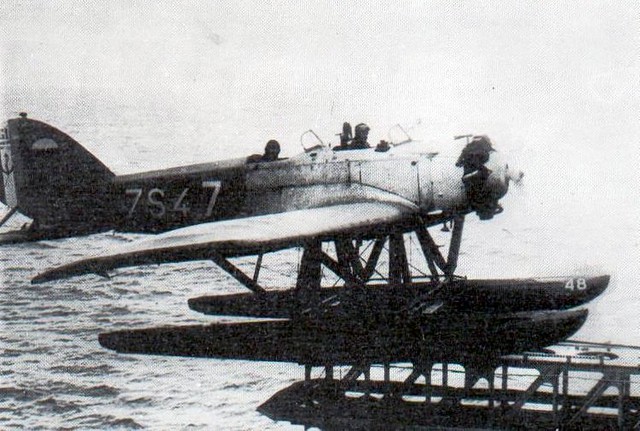The French Navy had taken note of the inshore Monitors the Royal Navy had used so successfully during World War One to anchor the seaward end of the Allied Armies. The cancellation of the Normandie class provided three turrets but only five guns of the 400mm size they were to be armed with. The French Navy decided that two Monitors could be built with the two completed turrets and put out the tenders for the builders. The first ship was laid down in 1928 and completed in 1931. The second ship was meant to be laid down in 1929 but the Stock Market crash delayed the ship and it was not laid down till 1931 and completed in 1934.

The French wanted the ships to be able to act independently of the fleet, and fitted an aircraft and catapult, so that they had their own spotting and search capabilities. The French had noted the speeds of the British monitors and decided that more speed would give better flexibility. The ships would mainly act inshore where they could be open to counter-battery fire so the side and deck armour were made strong enough to defeat medium sized guns. Aircraft had started to prove themselves, with Billy Mitchell's demonstration of bombers -v- ships, so the AA weaponry was increased over the initial plans. The only change to the ships during the 1930's was the upgrading of the 25mm to the Hispano-Suiza 20mm. Changing the singles out for twins.
World War Two finds the ships, one at Brest and the other at Toulon. The one at Brest is ordered up to Calais, from where it can support the army. The Loire in the Med is ordered to join the Rhone. Then nothing. The phoney war is in non action. It is not until April 1940 when the Germans attack into Norway that the ships are given orders to support the French forces in Norway. Both ships were at Namsos supporting the French forces in the area. their heavy AA batteries were particularly useful in defense of the port. 22nd of April and the Germans attack the port of Namsos with Stukas, aiming to sink the Allied shipping. Both the Rhone and the Bison were sunk. Two days later the naval forces were withdrawn and the Loire went back to Calais. May and June 1940 the Loire is heavily involved around the coast near Calais and Dunkirk. During the withdrawal of British and French units off the beaches, the Loire was particularly useful due to its size and moderate draught that allowed it to get close where it could pick up hundreds at a time and drop them at Dover. Replenish and repeat. When the Germans stopped short of the beaches on Hitler's 'hold' order, the German tanks were still within range of the Loire's 400mm guns. 400mm high explosive shells made absolute mincemeat of the German vehicles. Almost a regiment of tanks were wiped out before they were ordered back out of range. Loire's finest moment. But such impudence requires chastising and the German Stukas found the Loire and a dozen hits later left the ship a smoking ruin, sunk in shallow water. The wreck was salvaged and scrapped post war.
